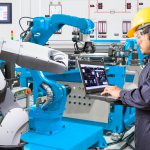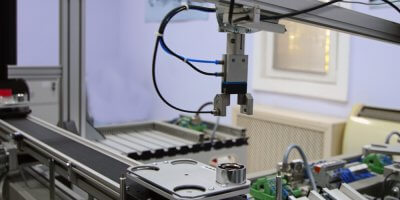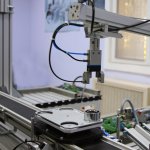
Transportation sector has been investing heavily on IoT platforms to further optimize its efficiency, Source: Shutterstcok
How IoT can turbocharge the transportation sector
THERE has been plenty of chatter about the internet of things (IoT) in the past decade or so, and most often, these conversations focus on the industrial and manufacturing sector.
IoT is a technology that allows devices – be it machines, computers, or sensors – to connect and exchange information without human intervention – and is one of the core element of Industry 4.0.
By having machines communicate with each other, data collection becomes seamless, and enables automation and robust decision making.
One sector that has been investing heavily in IoT platforms is the transportation industry. Here are a few ways IoT is expected to turbocharge the sector.
# 1 | Fleet and transit management
Integrating IoT technology to current fleet management systems will enable information to be delivered in real-time. Businesses will then be able to make timely decisions based on data to deploy their assets accordingly.
Efficient asset management will help enterprises to reduce maintenance costs, fuel consumption, and overall operational downtime, all thanks to real-time dashboards powered by IoT sensors and trackers.
Public transit management systems also stand to reap the same benefits and can further extend them to their passengers. With transport providers now privy to tracking data, forecasting arrival time can be more accurate.
# 2 | Smart inventory systems
IoT devices such as weight sensors, photosensors, acoustic sensors, scanners, among others, deliver high-quality data that that helps determine the actual status of a warehouse or distribution center.
Being aware of the information in real time improves inventory management cost, and can be further enhanced with the integration of AI technology that features predictive maintenance and automation.
# 3 | Asset tracking and optimizations
Interconnected devices enable quick and easy asset monitoring and management, whereby information such as location and current status can be tracked online.
Enterprises with a large number of trucks, for example, could keep tabs on load and location, allowing the company to deploy trucks more efficiently.
If a driver deviates from the set route, the information can be fed to the central data processor to ensure the company can better manage expectations by adjusting the delivery time of a particular consignment.
In conclusion, other innovations such as cloud storage, increasingly sophisticated hardware, and robust connectivity have allowed IoT to flourish in recent times, enabling continuous monitoring and data collection.
These technologies have already transformed the transport industry in a significant way and will continue to be disruptive in the coming years.
Companies that have yet to adopt IoT to their operation may find themselves being left behind as competitors surge ahead.
READ MORE
- Strategies for Democratizing GenAI
- The criticality of endpoint management in cybersecurity and operations
- Ethical AI: The renewed importance of safeguarding data and customer privacy in Generative AI applications
- How Japan balances AI-driven opportunities with cybersecurity needs
- Deploying SASE: Benchmarking your approach






